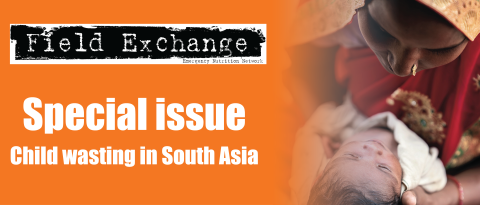Burden of child and maternal malnutrition and trends in states of India 1990-2017
Research snapshot1
India has a large and persistent burden of malnutrition. However, with a population of 1.4 billion people residing across states which are at varying levels of health transition, burdens of malnutrition are uneven. This study presents indicators of malnutrition from multiple sources for each state in India from 1990 to 2017 and models the prevalence of malnutrition up to 2030 based on the 1990-2017 trends. The projections are compared with Indian targets (India National Nutrition Mission (NNM) 2022) and global targets (World Health Organization (WHO) and the United Nations Children’s fund (UNICEF) 2030) to inform state-specific policy action.
Results show that malnutrition was the predominant risk factor for death in children under five years of age in every state of India in 2017, contributing to 68.2% (95% confidence interval (CI) 65.8–70.7) of under-five deaths. Malnutrition was also the leading risk factor for loss of health for all ages and responsible for 17.3% (16.3–18.2) of total disability-adjusted life years (DALYs). The prevalence of various forms of undernutrition in India in 2017 was 21.4% (20.8–21.9) for low birth weight; 39.3% (38.7–40.1) for child stunting; 15.7% (15.6–15.9) for child wasting; 32.7% (32.3–33.1) for child underweight; 59.7% (56.2–63.8) for anaemia in children; 54.4% (53.7–55.2) for anaemia in women aged 15-49 years; 53.3% (51.5–54.9) for exclusive breastfeeding; and 11.5% (8.5–14.9) for child overweight. If the trends continue by 2022 there will be an estimated excess prevalence of 8.9% for low birthweight, 9.6% for stunting, 4.8% for underweight, 11.7% for anaemia in children, and 13.8% for anaemia in women relative to NNM targets. By 2030, if current trends persist, there will be a 10.4% excess prevalence for wasting and 14.5% excess prevalence for overweight, and 10.7% less exclusive breastfeeding compared to UNICEF and WHO targets. Burdens and gaps vary substantially between states; Uttar Pradesh, Bihar, Assam and Rajasthan had the highest burdens of malnutrition.
Results highlight that malnutrition remains one of the most serious public health challenges across India, with substantial heterogeneity across states. Higher rates of improvement will be needed for all malnutrition indicators in most states to achieve the Indian 2022 and the global 2030 targets. The policy momentum generated by the new NNM can benefit from this state-level data to try get malnutrition targets back on track.
1 India State-Level Disease Burden Initiative Malnutrition Collaborators. The burden of child and maternal malnutrition and trends in its indicators in the states of India: the Global Burden of Disease Study 1990–2017. Lancet Child Adolesc Health. 2019; 3: 855–70. https://doi.org/10.1016/S2352-4642(19)30273-1


 English
English Français
Français Deutsch
Deutsch Italiano
Italiano Español
Español